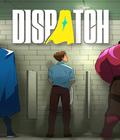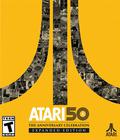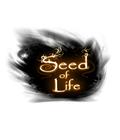I don't know a lot about gardening. I know that you need seeds, soil, sun and water. I also know that sometimes, things just don't grow, despite your best efforts to nurture your garden, and I bet a pile of life-sucking aliens would really throw a wrench into your carefully laid plans. In Seed of Life, a puzzle-platformer by MadLight, that's pretty much what happens, although on a much larger scale.
You are Cora, one of the few — if only — remaining people living on the planet Lumia, and to bring back the life-giving sun, you need to locate the seed of life. The daunting yet simple goal of the game is set for you from the get-go in normal mode, which was the mode I blindly chose to play in. The options menu only offered story mode, normal mode, and so on, but no information was provided about what those actually entailed.
This was my first minor issue with Seed of Life. I don't know if everyone does this when they play a new game, but the first thing I do is check the options menu. Any frequent gamer knows that in the options menu, you'll find controls for the graphics, sound, controls, etc., and they're usually very well labeled. In Seed of Life, I had no idea what I was looking at: X axis? Y axis? Not the typical options you'd find in a game! The same non-information was available for the different gameplay modes; it's not a deal-breaker, but I've never been a fan of going in blind.
Some controls were also never really explained until I found myself stuck and unable to get past a certain part. For example, I could see a lumia plant, which gives you what are essentially mana increases (more on that later) behind a rock that was wedged fairly low over a small opening, and it looked big enough that I could crawl through it, but I had not been informed that I could crawl. I eventually opened the options menu and found the "crawl" function and continued on my journey (after briefly smacking my palm to my forehead). It's not a huge deal, but it wasted some time.
There wasn't a tutorial, but again, I played on normal mode, so it's possible there was a tutorial in story mode. I'm not usually a fan of tutorials, and some games get by without them, but this game had the "feel" of a game that needed a heads-up. Platformers tend to leave you in the dark at times, so it's no big surprise, and I should've probably double-checked the controls in my routine pre-game options menu perusal.
When it comes to exploring Lumia, it's a treat. Seed of Life is a beautiful game in terms of the color palette, fluidity of the controls, and the overall atmosphere. Very few games give you the feeling of real solitude; a perfect example of one that succeeds is Dark Souls (all of them). Just as in Dark Souls, it's powerful to realize that you are very much alone on your adventure.
Cora is not alone on this planet, as it would seem, and the way I found out was a shock. I literally turned a corner, and there were some adorable, cute blue beings that emitted a red radius as they roamed in an incomprehensible circle. Any gamer knows that red is bad, but I wanted to see what would happen if I wandered into one; they appear to suck the life and light out of you, which was no surprise. Thankfully, there are checkpoints everywhere, and I knew this as I stepped into the ring, so I respawned feet away from the danger, no worse for the wear.
The gameplay was generally smooth, but it was sometimes a little clunky. Some controls were buggy, like accessing the glossary. When this feature becomes available, a tutorial window appears, informing you that holding down the "G" button on the keyboard opens the glossary. However, nine times out of 10, this didn't work, and I had to access it via the game menu. Maybe this was intentional, or maybe the glossary is only accessible that way when a new term is added, but again, there was no information about that.
To navigate the world, Cora needs to take down purple shields blocking her path and solve some puzzles or series of platform jumps to continue. Thankfully, after stumbling along the little blue creatures (Namurians) you find an alien AI who provides you with a compass that also holds abilities (Talismans) that she can apply. She needs to find capsules that contain Talismans during her journey; the AI also explains a few things along the way, often giving hints about what to do next. Many of the abilities Cora finds, such as being able to heal and sprint, are helpful with the gameplay, but they're sometimes necessary to move forward. As Cora unlocks the purple shields, she pulls their power sources and adds them to various pedestals to unlock new abilities. A word of warning: Some of the ability consoles require lumium to access, but the game doesn't inform you (big surprise) that this is a permanent loss of lumium.
Cora has a typical health and mana (lumium) pool, like many other games. The former drains in certain areas of the world, or if she's attacked by the Namurians, or — something that shamefully happened a few times in my playthrough — by falling unceremoniously to her death. The increases in lumium that she earns by interacting with the planet's lumia plants are necessary to unlock more features and abilities as the game continues, so finding those plants becomes a pretty important part of the game.
Movement involves the typical WASD with some mouse coordination, and moving around the game is simple. Seed of Life is described as a puzzle platformer, but it's not as "platformy" as some of the other games I've played. There are puzzles, but they're so easy that they're superfluous, and they feel shoehorned into the story. Nar, the disembodied AI who accompanies you through the compass device you wear, provides hints for puzzles or conundrums, often before you've had a moment to think it through. As a lover of puzzles, I found this aspect more annoying than helpful.
The voice actor who played Cora seemed inexperienced, and it was easily one of the worst things about the game. It would've been better if they'd simply used text and avoided the additional cost of a subpar voice actor because her tone was slow and flat, which did nothing for my level of engagement with the game. As one of the last living people on her planet, she should have a sense of panic, urgency, and delight when she completes a task that would help literally save the world. There was none of that, and it pulled me out of the lonely, lovely alien world every time she spoke. The voice acting was astoundingly bad, and since there are subtitles, you can turn off the audio and do without it entirely.
The audio in the game is low-key, and that works well for the story and ambiance, so the developers did well in that area. Seed of Life looks amazing, with warm orangey-pink hues contrasting the cool blues of the Namurians and the dying sun. As the title was developed by a small team, I found it to be above my expectations. It is genuinely beautiful and a delight to experience.
The level design was also pretty good, but there were a few times that I found myself in places that I probably shouldn't have been, as misinformation once again took over my playthrough. There were times I was supposed to walk along an invisible path — using the "1" key shows this, but it uses lumium, so I avoided using it unless I was near a pedestal, which recharges health and mana — and instead went around by a series of strategic hops. I figured out the correct path afterward, by which time it was irrelevant. This was frustrating, as Nar is always there to point out the obvious, but she never utters a peep when you might need to do something special.
While Seed of Life is not without its faults, I'm looking forward to seeing what MadLight comes out with next, as such a small team was able to create such a beautiful world. More importantly, Cora's heroic journey is the kind of adventure that gamers universally love to be a part of. Her story and heroism are the seed that this game can grow from. Seed of Life is entertaining enough, despite the aforementioned issues, so spending a few short hours with Cora was enjoyable. The game is only about 4-5 hours long but can be stretched further with extensive exploration.
Fans of platformers might find Seed of Life to be a smidge more fun than puzzle game fanatics, but the overall experience in this beautiful, dying world is worth the time and price point, especially as a relatively short game that can be completed over a lazy weekend. Much like Cora's quest, the seeds of this game are high quality, and with some fine tuning and care, Seed of Life could blossom into something incredible.
Score: 7.5/10
More articles about Seed Of Life











 Seed of Life is a futuristic, third-person, sci-fi puzzle platformer.
Seed of Life is a futuristic, third-person, sci-fi puzzle platformer.








































